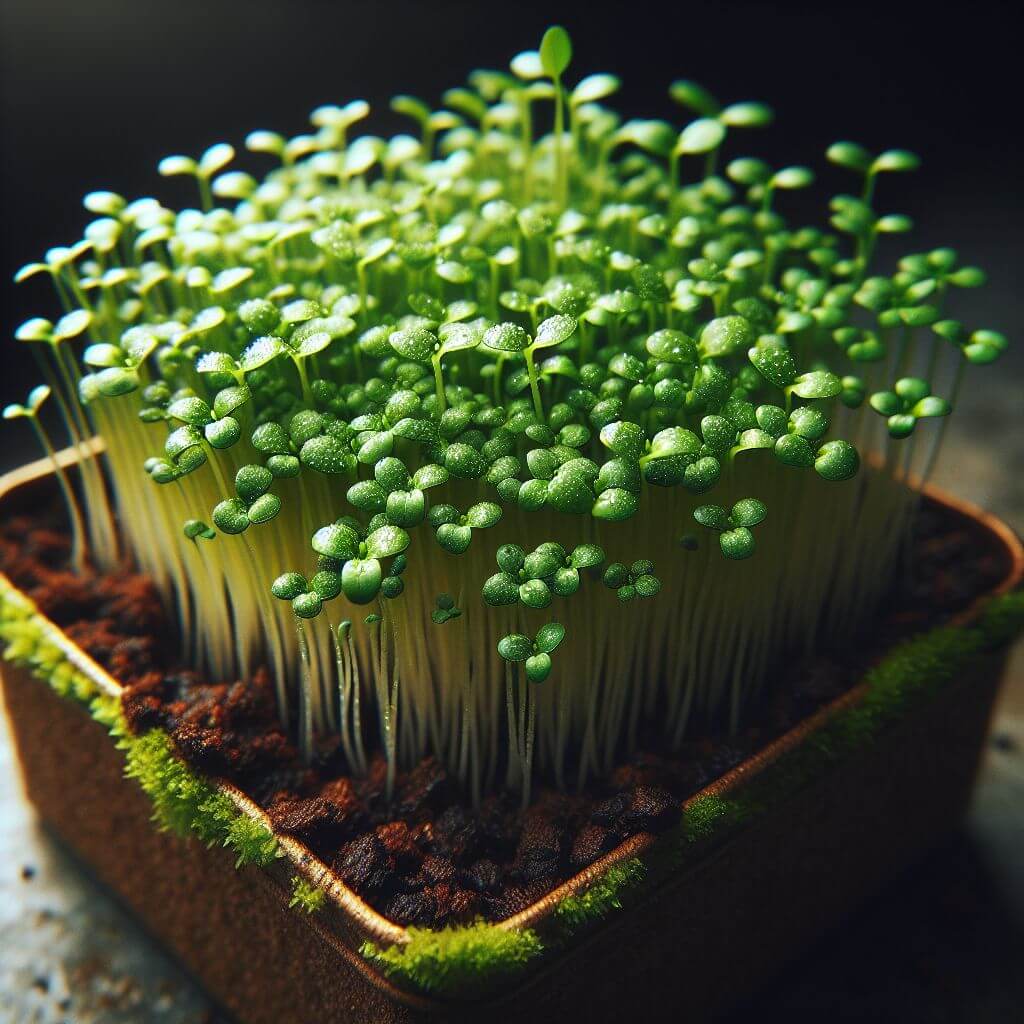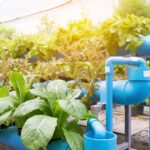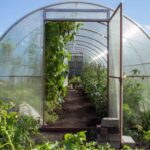Key Takeaways
- Mustard microgreens are an efficient, nutrient-rich food source perfect for emergency supplies.
- With simple supplies and steps, anyone can grow mustard microgreens indoors.
- These greens are packed with vitamins and minerals, supporting a well-balanced diet.
- Mustard microgreens can be harvested in just a few days, offering a rapid source of fresh food.
- Purchasing high-quality seeds from reputable sources like Survival Essentials is crucial for the best yield.
Why Mustard Microgreens Are Your Sustainable Superfood
When we talk about emergency food supplies, we often think of canned goods and dry staples. But what if I told you that there’s a superfood that can grow right on your windowsill, even in the midst of a crisis? Mustard microgreens are not just any ordinary plant. They’re a powerhouse of nutrition, easy to grow, and sustainable. Let’s dive into why these tiny greens should be a staple in your emergency food arsenal.
What Are Mustard Microgreens?
Mustard microgreens are young mustard plants harvested just after the first leaves have developed. Don’t let their size fool you; these little greens pack a flavorful punch. Mustard microgreens are spicy, full of flavor, and most importantly, brimming with nutrients like vitamins A, C, E, and K, along with essential minerals.
But it’s not just their nutritional profile that makes them ideal for an emergency food supply. Their quick growth cycle means you can go from seed to salad in as little as five days. Now that’s fast food, but the good kind!
The Sustainability of Growing Microgreens
Sustainability is all about meeting our own needs without compromising the ability of future generations to meet theirs. Growing mustard microgreens fits this perfectly. They require very little space, water, and no harmful pesticides. This means you can grow a lot in a small area, again and again, ensuring a constant supply of fresh greens.
And because you can grow them indoors, you’re not at the mercy of the seasons or bad weather. Whether it’s the middle of winter or the peak of summer, mustard microgreens can thrive. This makes them a reliable source of food no matter the circumstances.
A Step-by-Step Guide to Growing Mustard Microgreens
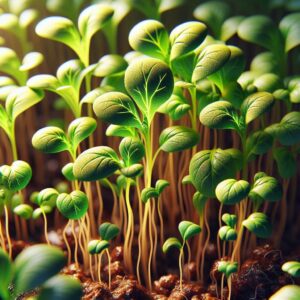
Ready to get started? Growing mustard microgreens is straightforward. You’ll be amazed at how simple it is to bring these nutritious greens into your life.
Gathering Your Supplies
First things first, you need to gather a few basic supplies:
For those interested in starting an urban garden, consider checking out the Urban Gardeners’ Starter Kit for essential items to get your garden growing.
- A shallow tray or container
- Quality potting soil
- Mustard microgreen seeds (preferably organic)
- A spray bottle for watering
- A sunny windowsill or grow light
That’s it! With these items, you’re ready to grow your own microgreens. Let’s break down each step.
Choosing the Right Seeds
- Opt for seeds specifically labeled for microgreen growth; they’re selected for their superior germination rates and robust growth.
- Quality is key, so choose organic seeds to ensure your microgreens are free from harmful chemicals.
- Purchase from reputable suppliers like Survival Essentials to guarantee the best start for your microgreens.
Remember, the seeds you choose will determine the quality of your microgreens. Don’t skimp on this step!
Now that you have your seeds, let’s prepare their new home.
Container and Soil Selection
You’ll need a shallow tray or container with drainage holes to let excess water escape. This can be a simple nursery tray or even a repurposed takeout container. Next, fill it with a quality potting mix. A good mix will support your microgreens’ roots and provide the necessary nutrients for growth.
Ensure the soil is moist but not waterlogged. You want a happy medium where the seeds can drink up without drowning.
Lighting and Watering Needs
Mustard microgreens love light, but not direct scorching sun. A bright windowsill or a grow light will do the trick. Keep them in a well-lit area, and you’ll see them reaching for the sky in no time.
Watering is best done with a spray bottle to avoid disturbing the tiny seeds. A gentle mist once or twice a day is enough to keep the soil moist until your greens are ready to harvest.
Planting Your Mustard Seeds
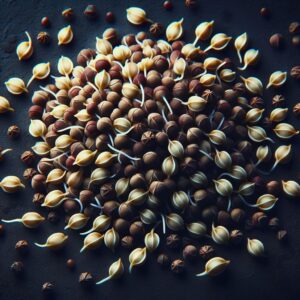
With your tray and soil ready, it’s time to plant:
- Spread the seeds evenly across the surface of the soil. No need to bury them; they just need good contact with the moist soil.
- Gently press them into the soil with your hand or a flat object.
- Mist the surface with your spray bottle to settle the seeds in place.
After planting, cover the tray with a lid or another tray to create a mini greenhouse effect. This helps maintain humidity and warmth, encouraging germination. Keep an eye on your seeds, and mist them if the soil starts to dry out. In a few days, you’ll see the magic happen as tiny green shoots emerge.
Now, let’s talk about what happens after those shoots appear.
Step 1: Preparing the Soil
- Choose a potting mix that is light and allows for good drainage. You don’t want your microgreens sitting in soggy soil.
- Fill your container to just below the rim, leaving some space to avoid spillage when watering.
- Before sowing your seeds, moisten the soil with your spray bottle. It should feel like a wrung-out sponge, not a drenched towel.
Good soil prep sets the stage for healthy growth. Now, your seeds have a cozy bed to nestle into.
Next up, we’ll scatter the seeds.
Step 2: Sowing the Seeds
Evenly sprinkle the mustard seeds over the surface of your prepared soil. They should be close but not piled on top of each other. This ensures each microgreen has enough room to grow without competing for light and nutrients.
Once sown, give them another gentle misting. You won’t need to cover the seeds with soil; they need light to germinate properly. Just make sure they’re making good contact with the moist soil beneath them.
Step 3: Providing Optimal Environment
After sowing, cover your container with a clear lid or plastic wrap. This creates a greenhouse effect, trapping in moisture and warmth to encourage the seeds to sprout. Place your setup in an area with plenty of indirect sunlight or under a grow light.
Keep an eye on the moisture level of the soil, misting as needed to keep it consistently damp. In just a few days, you should see your mustard microgreens starting to grow.
From Seedling to Harvest
Caring for Your Microgreens
As your mustard microgreens grow, it’s crucial to maintain the right conditions. Continue to mist them daily to keep the soil moist. Rotate your tray regularly to ensure even growth, as microgreens will lean towards the light source. If you’re using a grow light, aim for about 12-16 hours of light per day.
Watch for any signs of overcrowding and thin the microgreens if necessary. This gives the remaining plants more room to flourish. Remember, a little care goes a long way in producing a bountiful harvest.
When to Harvest
Mustard microgreens are usually ready to harvest in 5-10 days after planting, once they’ve grown their first true leaves. These are the second set of leaves that appear after the initial, simpler seed leaves.
To harvest, simply snip the microgreens just above the soil line with clean scissors. Harvest what you need and allow the rest to continue growing. This way, you’ll have fresh microgreens at your fingertips whenever you need them.
Nutrition Unpacked: The Health Benefits of Mustard Microgreens
Mustard microgreens aren’t just quick and easy to grow; they’re also a nutritional powerhouse. These tiny greens are rich in antioxidants, vitamins, and minerals that are essential for maintaining good health.
Comparing Nutrient Density with Other Greens
| Green | Vitamin A | Vitamin C | Vitamin K | Antioxidants |
|---|---|---|---|---|
| Mustard Microgreens | High | High | High | High |
| Spinach | Medium | Medium | High | Medium |
| Kale | High | High | Very High | High |
As you can see, mustard microgreens hold their own against other popular greens, often containing higher concentrations of nutrients due to their young age and the density at which they’re grown.
Mustard Microgreens and Digestive Health
Mustard microgreens are a great source of fiber, which is essential for healthy digestion. Fiber helps to keep things moving through your digestive tract and can prevent constipation. Besides that, they contain compounds that may support the good bacteria in your gut, contributing to a healthy microbiome.
Boosting Immunity with Microgreens
The vitamins and antioxidants found in mustard microgreens can help strengthen your immune system. Vitamin C, for example, is well known for its immune-boosting properties. By including mustard microgreens in your diet, you’re giving your body some of the tools it needs to fend off illness.
Incorporating Mustard Microgreens Into Your Diet
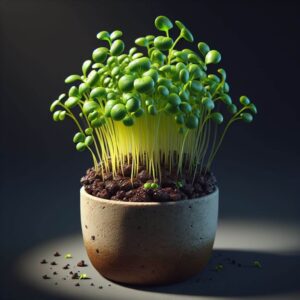
Now that you’ve grown your mustard microgreens, it’s time to enjoy them! These versatile greens can be used in a variety of dishes.
Creative Recipe Ideas
Try adding them to sandwiches for a spicy kick, tossing them into salads for extra nutrition, or using them as a garnish on soups and stews. They can even be blended into smoothies for a hidden veggie boost.
Here’s a simple idea to get you started: grow mustard microgreens.
Mustard Microgreen Avocado Toast: Toast a slice of your favorite bread, spread a layer of ripe avocado, and top with a generous handful of mustard microgreens. Sprinkle with salt, pepper, and a drizzle of olive oil for a nutritious and delicious breakfast or snack.
Best Practices for Storing and Preserving Freshness
To keep your harvested microgreens fresh, store them in a container in the refrigerator. Place a paper towel in the container to absorb excess moisture and prevent wilting. They’ll stay crisp and fresh for up to a week if stored properly.
Choose Mustard Microgreens for Your Emergency Food Supply
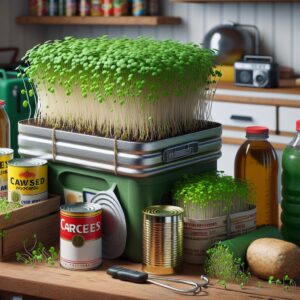
Mustard microgreens are an excellent choice for an emergency food supply due to their nutritional value and ease of growth. They can provide a fresh, nutritious food source when other options may be limited.
Long-Term Storage and Seed Preservation
For long-term storage, keep your mustard seeds in a cool, dry place. Properly stored, they can remain viable for several years, ensuring you can grow fresh greens whenever you need them.
Why Mustard Microgreens Are Essential in an Emergency
In an emergency, access to fresh produce can be scarce. Mustard microgreens can be grown quickly and easily indoors, providing essential nutrients that may be missing from other non-perishable food items. They’re a smart addition to any emergency food plan.
Getting Started with Your Mustard Microgreen Garden
If you’re ready to add mustard microgreens to your emergency food supply, the first step is acquiring high-quality seeds.
Acquiring Quality Seeds
Choose seeds that are organic and non-GMO to ensure the healthiest and most sustainable crop. Look for suppliers that specialize in seeds for sprouting and microgreens, as these will give you the best results.
Finding a Reputable Source
When looking for seeds, it’s important to find a reputable source to ensure their quality and viability. Suppliers like Survival Essentials offer a wide selection of seeds that are perfect for starting your mustard microgreen garden.
With these steps and tips, you’re well on your way to growing your own sustainable nutrition source with mustard microgreens. Not only will you be prepared for emergencies, but you’ll also be taking a significant step towards a healthier, more self-sufficient lifestyle.
When it comes to ensuring a steady supply of nutritious food, having a sustainable approach is key. That’s why mustard microgreens are such a valuable addition to any emergency food supply. They’re not only packed with essential nutrients but also incredibly easy to grow, even in limited spaces. This makes them an ideal choice for those looking to enhance their food security and promote sustainable living practices.
Acquiring Quality Seeds
Starting your mustard microgreen garden begins with one crucial step: finding high-quality seeds. The seeds you choose will directly impact the growth and yield of your microgreens, so it’s important to select them carefully.
Finding a Reputable Source
- Look for suppliers that specialize in seeds for sprouting and microgreens.
- Check for organic and non-GMO certifications to ensure you’re getting the purest seeds.
- Read reviews and testimonials from other gardeners to gauge the quality of the seeds and customer service.
When you start with premium seeds, you’re setting yourself up for a successful harvest. It’s worth investing in the best to ensure your microgreens are as nutritious and flavorful as possible.
And remember, the fresher the seeds, the better. Fresh seeds have higher germination rates, which means more successful sprouts and a bountiful crop.
Once you’ve sourced your seeds, it’s time to get your hands dirty (in the best way possible) and begin the planting process.
Survival Essentials: A Trusted Supplier
One of the top suppliers in the market for high-quality mustard microgreen seeds is Survival Essentials. They offer a diverse range of seeds that are perfect for growing microgreens, including mustard seeds that are specifically selected for their superior germination rates and robust growth.
Choosing a supplier like Survival Essentials means you’re not just buying seeds; you’re also gaining a partner in your sustainable nutrition journey. Their commitment to quality ensures that you’ll be able to grow nutrient-rich microgreens to support your health and well-being.
Taking the First Step Towards Self-Sufficiency
Embarking on the journey of growing your own food is both empowering and rewarding. By growing mustard microgreens, you’re taking a significant step towards self-sufficiency and sustainable living. Not only will you have a fresh supply of greens at your fingertips, but you’ll also gain the knowledge and skills to produce your own food, regardless of external circumstances.
Remember, every big change starts with a small step. Planting your first batch of mustard microgreen seeds is a move towards a more resilient and healthy future.
So, why wait? Get your seeds, set up your growing area, and start nurturing your very own microgreen garden today. The rewards are just a few days away!
FAQs About Mustard Microgreens and Sustainable Nutrition
Let’s tackle some common questions about mustard microgreens and their role in sustainable nutrition.
How Long Do Mustard Microgreens Take to Grow?
One of the best things about mustard microgreens is their quick growth cycle. Typically, you can expect to harvest your microgreens within 5 to 10 days after planting the seeds. This rapid turnaround makes them an excellent option for continuous cultivation, ensuring a steady supply of fresh greens.
Example: If you plant mustard microgreen seeds on a Monday, you could be enjoying your very own homegrown greens by the weekend!
This speed is particularly beneficial in emergency situations where access to fresh food may be limited.
Can I Grow Mustard Microgreens Without a Garden?
Yes, absolutely! Mustard microgreens are perfect for indoor gardening. All you need is a shallow container, some soil, seeds, and a spot that receives good indirect light. They’re ideal for urban dwellers or those with limited outdoor space.
Are Mustard Microgreens Safe to Eat Every Day?
Mustard microgreens are not only safe to eat daily, but they’re also a great way to boost your nutrient intake regularly. They’re low in calories and high in vitamins and minerals, making them a healthy addition to any meal.
What Other Microgreens Can I Grow for Emergency Nutrition?
Besides mustard, there are several other microgreens you can grow, such as radish, broccoli, arugula, and kale. Each type of microgreen has its own unique nutritional profile and flavor, giving you a variety of options for your emergency food supply.
Where Can I Buy Mustard Microgreen Seeds Online?
You can purchase high-quality mustard microgreen seeds from online suppliers like Survival Essentials. They offer a range of seeds suitable for growing microgreens, providing you with the best start for your indoor garden.
With these answers in hand, you’re now equipped with the knowledge to begin growing mustard microgreens and enhancing your emergency food supply. It’s a small step that can make a big difference in promoting sustainable nutrition and food security for you and your community.

